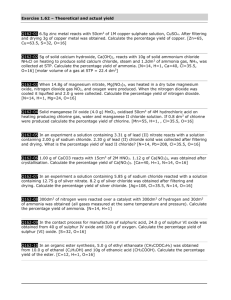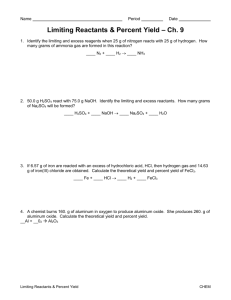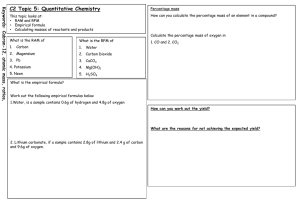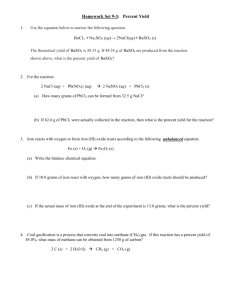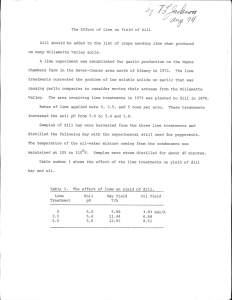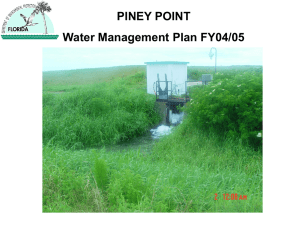Section 3.7 Packet Continued – Percent Yield
advertisement
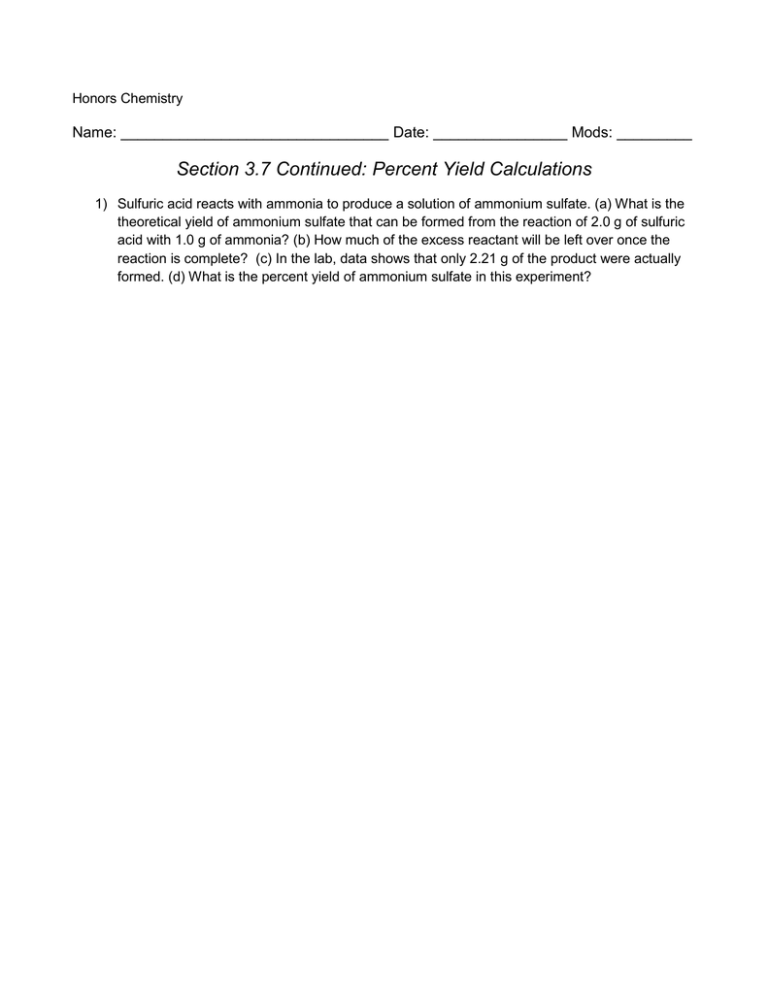
Honors Chemistry Name: ________________________________ Date: ________________ Mods: _________ Section 3.7 Continued: Percent Yield Calculations 1) Sulfuric acid reacts with ammonia to produce a solution of ammonium sulfate. (a) What is the theoretical yield of ammonium sulfate that can be formed from the reaction of 2.0 g of sulfuric acid with 1.0 g of ammonia? (b) How much of the excess reactant will be left over once the reaction is complete? (c) In the lab, data shows that only 2.21 g of the product were actually formed. (d) What is the percent yield of ammonium sulfate in this experiment? 2) Use the balanced equation below to find out how many grams of sulfur dioxide are actually produced if 1.5 x 1023 molecules of zinc sulfide are reacted with excess oxygen and the percent yield is 75%. 2 ZnS(s) + 3 O2(g) 2 ZnO(s) + 2 SO2(g) 3) Some underwater welding is done via the thermite reaction, in which rust (iron (III) oxide) reacts with aluminum to produce iron and solid aluminum oxide. In one such reaction, you combine 258 g of aluminum and excess rust to produce 464 g of iron. What was the percent yield of iron for your experiment? 4) Solid “slaked lime,” Ca(OH)2, is produced when water reacts with solid “quick lime,” CaO. While performing a laboratory experiment, you begin with 2400 g of quick lime, add excess water, and produce 2060 g of slaked lime. What is the percent yield of slaked lime in your reaction? 5) The Haber process is the conversion of nitrogen and hydrogen at high pressure into ammonia, as follows: N2(g) + 3 H2(g) 2 NH3(g) a) How many grams of ammonia are actually produced if 375 g of nitrogen reacts with excess hydrogen and the percent yield is 70%? b) You produce 700 g of ammonia during an experiment, what mass of nitrogen did you use to begin your reaction, assuming that the percent yield of your experiment is 80%?


